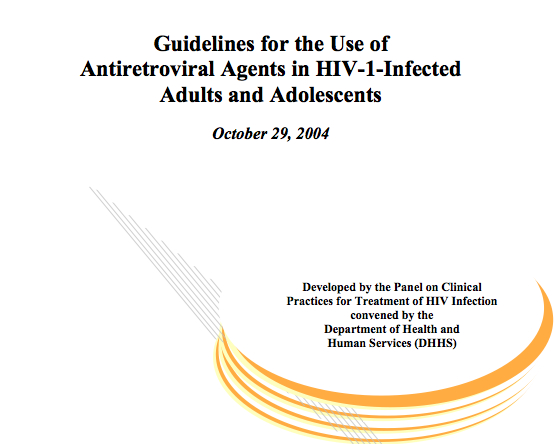An ongoing dialogue on HIV/AIDS, infectious diseases,
May 20th, 2012
News on HIV and HCV Testing, and in Praise of Accurate Screening Tests
 Two recent news items reminded me how lucky we are to have some very accurate screening tests for certain infectious diseases.
Two recent news items reminded me how lucky we are to have some very accurate screening tests for certain infectious diseases.
The news:
- An expert FDA panel backed approval of the first true home test for HIV, the OraQuick mouth swab test. Approval of OraQuick for home use may occur later this year. While home testing for HIV exists already — HomeAccess — the OraQuick test will be the first that does not require submitting the specimen to a central laboratory; the user wil be able to get the result at home, much like a pregnancy test.
- The CDC is recommending that all Americans born between 1945 and 1965 be tested for hepatitis C. With 1 in 30 from this age group infected, and increasingly effective therapies available now and the near future, this testing strategy (which involves a simple blood test done by a clinician) could dramatically reduce liver-related deaths. (Note that I can’t find this recommendation on the actual CDC site — I know it’s somewhere, but not here or here or here. Oh well.)
Neither one of these tests is perfect, but they’re definitely good enough to be used broadly, with reactive results triggering further testing to confirm or rule out infection. Furthermore, confirmatory tests for HIV and HCV are extremely accurate. In other words, sorting out real HIV or HCV infection from a false-positive screening test is generally quite straightforward.
Now compare and contrast with the disease mentioned in this email query from a primary care provider:
Hi Paul, quick question. 49 year old healthy guy, fatigue and palpitations on and off the past year; normal exam and ECG. Says other people in his neighborhood have Lyme, so I sent the test. ELISA is positive, immunoblot has one IgM band, all IgG bands negative. Could this be Lyme? Should I just give him doxy? For how long?
What did Charlie Brown say when Lucy pulled away the football?
May 16th, 2012
Azithromycin Linked to Cardiovascular Death — Not A Placebo After All
 I’ve commented before about azithromycin, that remarkable antibiotic that clinicians seem to prescribe for, gosh, you-name-it.
I’ve commented before about azithromycin, that remarkable antibiotic that clinicians seem to prescribe for, gosh, you-name-it.
But a paper just published in the New England Journal of Medicine links use of azithromycin to an increased risk of cardiovascular death, a reminder that “azithro” is in fact a drug — and that all drugs have side effects.
A few more musings on this extremely popular antibiotic:
- Has there been anything even close to the universal “penetrance” of the 5-day, 6-pill “Z-Pak” in terms of outpatient antibiotic prescribing? Oddly enough, the first time I wrote for it way back in the early 1990s, the patient I gave it to thought he was being ripped off — not enough pills!
- Of course, that didn’t last long, many patients now ask for a “Z-Pak” by name. The marketing genius who came up with the “Z-Pak” should win the advertising equivalent of the Nobel Prize, even if he/she would fail a first-grade spelling test.
- The ubiquitous toy zebras probably didn’t hurt pediatric prescribing either. These trinkets are now forbidden, but you can pick one up on eBay if you’re feeling nostalgic.
- Initially, cost-cutters tried to get clinicians to prescribe erythromycin over azithro (and clarithro) since the newer macrolides were so much more expensive. Talk about a losing battle — sometimes newer is not just costly, it’s costly and better. (Ditto fluconazole when it replaced ketoconazole.)
- Now that azithromycin and clarithromycin are both generic, does anyone regularly use clarithromycin anymore? Yes, it’s more active versus atypical mycobacteria, but hardly enough so to make it worth the increased drug-drug interactions, QT prolongation, excess mortality risk (as seen in prospective studies like this one), and peculiar taste disturbance. (It was with clarithromycin that I learned the word dysgeusia — it means distortion of taste — and a famous mycobacterial researcher has a fascinating anecdote about how bizarre champagne tastes when accompanied by a side of Biaxin.)
- Department of Irony: Azithromycin was studied as treatment to prevent cardiac disease. You remember, treat Chlamydia pneumoniae, that notorious “cause” of atherosclerosis, and reduce cardiac events. (It didn’t work.)
- Little-known fact: Azithromycin was developed by a then-small Croatian pharmaceutical company named Pliva in the 1970s, with a world-wide patent in 1981 — 10 years before it was FDA-approved in the USA. At its peak, Pfizer was making more than $1 billion/year on azithromycin sales and, of course, sharing some of that with Pliva (and making stuffed zebras).
- The downside of all this azithromycin use? Predictably, increased rates of clinically important resistance — especially Strep pneumo and group A strep. Hard to believe that second-line treatment for pneumococcal pneumonia, back when I was in medical school, was erythromycin. Yes, I might be old.
If there’s a silver lining to this report in the NEJM, it’s that clinicians will stop prescribing azithromycin for conditions that clearly don’t need it — which is just about every uncomplicated outpatient respiratory infection.
Hey, we can dream, can’t we?
May 10th, 2012
Advisory Meeting Today on Tenofovir/FTC for PrEP, and a Proposed “Niche” for its Use
From Bloomberg News:
Gilead Sciences Inc.’s pill Truvada was safe and effective when used to protect uninfected people from getting HIV, U.S. regulators said in a report indicating the main concerns are when and how it should be used … The FDA asked its advisers to suggest who should get Truvada; what testing would be needed for administration; and what educational material should be used for patients and doctors. The advisers will meet May 10 to discuss the drug, the subject of debates over its appropriate use and cost.
As I’ve mentioned before, I have no doubt whatsoever that TDF/FTC works for PrEP, provided the person actually takes the med. And while it’s not yet approved for this indication, nothing has stopped clinicians from prescribing it already. There’s even a CDC “Guidance” on the practice that’s now over a year old. Remember, we give TDF/FTC all the time for post-exposure prophylaxis.
Despite the favorable data on PrEP and the availability of TDF/FTC, however, the use of TDF/FTC for PrEP has been quite limited, for a whole lot of reasons — including the need to find providers to do it (most HIV-negative patients are cared for by individuals unfamiliar with prescribing HIV meds), the cost of TDF/FTC, and concerns about long-term toxicity. Plus (and this is a biggie), people who are the biggest risk-takers when it comes to HIV exposures (and are the best candidates for PrEP) may not be so great at medical follow-up.
So here’s a scenario where I think PrEP makes a whole lot of sense:
- Serodiscordant heterosexual couple
- Pregnancy desired
- Infected partner already on ART, HIV RNA fully suppressed
- Couple stops using condoms
- Uninfected partner takes PrEP until conception
It’s not such a radical idea, as shown in this study from Italy Switzerland.
In so many ways it’s better than what we’re recommending now, which is artificial insemination if the woman is infected (or a home-brew lower tech method), and sperm washing followed by assisted reproduction technologies (e.g, in vitro fertilization) if the man is infected. Sure, this reduces the risk of transmission 100% in the former and probably 100% in the latter. But these are costly interventions, coverage from insurance plans is variable, and not all fertility programs offer them.
So the question is whether, in the post-052, post-Partners PrEP era, these recommendations still make sense for all couples who want to have children.
My opinion is that they don’t. Serodiscordant couples who want children should be given all the options — including all the pros and cons — and then be guided in how to have children most safely and efficiently.
May 7th, 2012
Difficulties and Differences on C difficile
Some things in our field — diseases, treatments, generalizations, cliches, fads — have really changed since back in the early 1990s, when I started in this business.
Here are a few that quickly come to mind:
- “Double coverage” of pseudomonas with a beta lactam plus an aminoglycoside was de rigueur
- MRSA was an inpatient concern only
- You never saw Lyme disease in the winter or in people who hadn’t left urban areas
- Mycobacterium avium complex was more of a problem in people with AIDS than in middle-aged, slender women who coughed
- Kids still got epiglottitis and meningitis from H flu
- Life-threatening colitis from C difficile was an exceedingly rare event, and barely ever occurred in otherwise healthy people
Yes, C diff has changed a lot — and not for the better. However, one thing that hasn’t changed about C diff is the controversy over treatment, something we’re grappling with now.
Should initial therapy be metronidazole? Or vancomycin? Or vancomycin just for severe cases? Or fidaxomicin? What if cost were no issue?
(Ha.)
How long should you treat, especially when the patient is still on antibiotics? What do you do about relapses? Probiotics? Tapering schedules? Fecal transplants? In severe cases, is diverting ileostomy an alternative to colectomy?
I don’t have the answers, just some opinions — which I’m happy to share — but first I’d be thrilled to get some outside views, if only on the initial therapy question.
April 30th, 2012
Do We Really Need Primary Prophylaxis for OIs Anymore?
 I’m currently on the inpatient consult service and just saw a guy who fits the typical profile of many hospitalized HIV patients in 2012:
I’m currently on the inpatient consult service and just saw a guy who fits the typical profile of many hospitalized HIV patients in 2012:
- Low CD4 (in this case, 120)
- Irregular to non-existent outpatient care before admission (lots of no-shows, cancellations, etc)
- Has received several prescriptions for antiretroviral therapy but for a whole variety of reasons, hasn’t been taking it
The medical specifics are otherwise unimportant — he didn’t have an HIV-related reason for being in the hospital. Instead, I want to focus on a question from the resident caring for him as she prepared his discharge papers:
Hi Dr. Sax, question on Smith — you mentioned he should restart HAART [ugh, I didn’t say HAART], but not Bactrim for PCP prophylaxis. Should we add that to his discharge meds?
Now the textbook answer is clearly yes, anyone with a CD4 < 200 should receive PCP prophylaxis, and that’s what these fine guidelines would say.
But I deliberately didn’t include it, for two key reasons. First, what this man needs to do is take HIV therapy, and I wanted the regimen to be a simple as possible. Why clutter it with that giant Bactrim tablet?
Second, assuming we can actually get him on ART, do we have any evidence whatsoever that primary prophylaxis for PCP is still necessary? All the studies of PCP prophylaxis were done way before we had effective HIV therapy — in fact, this one (for you history buffs) was done in the mid-1980s, before we had any antiretrovirals at all.
I posed this question to OI Guidelines guru John Brooks, who answered the following:
A randomized trial to address the question (i.e., PCP incidence among persons starting ART at CD4 <200 with vs. without Bactrim) would be ideal, but I would bet the number of participants required to demonstrate no difference in risk would be enormous, especially since (we hope!) folks would remain “at risk” for only a short period of time … As you probably know, cohort studies have tried to address the issue; I think only the Swiss Cohort has been able to successfully complete an analysis. We have tried with HOPS data, but incidence of the key prophylaxed OIs (PCP and MAC) was so low recently that we can’t get enough endpoints!
And that bolded statement right there is exactly my point. (The emphasis is mine, but John included his own exclamation point.) Effective HIV therapy drops OI incidence so sharply that prophylaxis is probably not necessary, and certainly is much less important than ART.
So if you get the question on the ID boards — should someone with a CD4 of 120 be on PCP prophylaxis? — the answer is yes.
In real life, however, I’m not so sure it’s still the right thing to do.
April 23rd, 2012
An Answer to a Commonly Asked Question: Is Treatment 100% Effective in Preventing HIV Transmission?
 The excitement about “treatment as prevention”, and the results of Study 052, have led to many patients asking the question (if not in these words, than using others with a less medical slant), “So if I’m on treatment and doing well, just what is the risk of my transmitting HIV to others?”
The excitement about “treatment as prevention”, and the results of Study 052, have led to many patients asking the question (if not in these words, than using others with a less medical slant), “So if I’m on treatment and doing well, just what is the risk of my transmitting HIV to others?”
It’s not a question that’s easy to answer, because even though none of the study subjects in 052 with an undetectable viral load transmitted HIV (the one case in the treatment group likely did so before virologic suppression), all the patients were counseled about standard prevention strategies, including condoms.
And we all know that nothing is 100% risk free. Not seat belts, football helmets, highway guard rails, parachutes …
Just take a look at this case report.
And over in Journal Watch AIDS Clinical Care, Chuck Hicks summarizes two studies highly relevant to this question, and concludes:
Although there is no doubt that ART significantly decreases the likelihood of HIV transmission, these data indicate that the risk for HIV transmission is not eliminated by suppressive ART. Shedding of virus in the male genital tract is not uncommon, even in men with consistently undetectable plasma HIV RNA … Thus, despite the fact that the threshold level of genital-tract HIV necessary for transmission is not known, caution is warranted. Recommending safer sex (and procreation) practices for all HIV-infected patients, even those with suppressed plasma HIV RNA, seems prudent.
That bolded statement really has to be our standard practice … right?
April 18th, 2012
Been There, Done That
I’d estimate the verisimilitude of the following video at approximately 100%:
(Thanks to Raphy Landovitz for the link!)
April 17th, 2012
EASL Starts Tomorrow — Get Ready for the HCV Treatment Deluge
I can’t think of a single upcoming scientific meeting in ID that’s likely to be more “game changing” — sorry for the tired metaphor — than the 47th European Association for the Study of the Liver (EASL) meeting, which starts tomorrow in Barcelona.
As a hint of what’s to come, earlier this month Abbott released these data on two studies of interferon-free treatments:
In the study known as “Co-Pilot,” different doses of ABT-450/r [a boosted HCV protease inhibitor], plus ABT-333 [a polymerase inhibitor] and ribavirin administered for 12 weeks showed sustained virological response at 12 weeks post treatment (SVR12) in 95 percent and 93 percent of treatment-naïve genotype 1 (GT1) patients. In addition, SVR12 was achieved in 47 percent of patients who were previous non-responders to past HCV treatment … In a separate study, known as “Pilot,” 91 percent of genotype 1 infected, treatment-naïve patients taking ABT-450/r and ABT-072 combined with ribavirin administered for 12 weeks, achieved sustained viral response at 24 weeks (SVR24).
To recap: That’s a > 90% cure rate for interferon-free, all oral regimens given for 12 weeks.
Mind you, these are just three small studies that could completely change how we treat this infection.
How many more like it are in the wings?
The bottom line is that anyone planning to start a patient on interferon-based HCV treatment today should weigh — very carefully — the pros and cons of treating now, vs waiting a couple of years for what will undoubtedly be superior regimens.
April 14th, 2012
2004 HIV Treatment Guidelines: Available Now!
 Bargain hunters will be glad to hear that over on Amazon, they can get a copy of the 2004 Guidelines for the Use of Antiretroviral Agents in HIV-1 Infected Adults and Adolescents — all for the remarkably low price of $16.15.
Bargain hunters will be glad to hear that over on Amazon, they can get a copy of the 2004 Guidelines for the Use of Antiretroviral Agents in HIV-1 Infected Adults and Adolescents — all for the remarkably low price of $16.15.
Notable content from that banner year included:
- for asymptomatic patients with CD4 > 350, the HIV RNA threshold to consider starting therapy changed from 55,000 (that was an unusual number, wasn’t it?) to 100,000 copies/mL
- stavudine (d4T) moved from preferred to alternative list, for obvious reasons
- tenofovir plus 3TC or FTC added to preferred NRTI combinations for PIs as well as NNRTIs
- discussion of hydroxyurea (remember that?) removed entirely
- a new section on treatment discontinuation, that includes this cautious statment: “In patients with HIV infection on antiviral therapy with viral suppression who have maintained CD4 levels above those currently recommended for initiating therapy, some relevant, but not definitive, data exist on stopping antiretroviral therapy.”
Of course you could also just go to the aidsinfo web site, which has all this interesting historical information for free.
That’s what I did.
(Hat tip to Alice Pau for the Amazon link.)
April 10th, 2012
A Skeptical Look at “Test and Treat”
Over in Journal Watch AIDS Clinical Care, Abbie Zuger has written a fascinating perspective on the recent enthusiasm for universal HIV treatment.
Her take? Let’s just say she doesn’t share the enthusiasm of public health officials and members of guidelines committees. Well, that’s a huge understatement.
Specifically:
This strategy, which calls for universal voluntary HIV testing and immediate antiretroviral therapy (ART) for all who test positive, has been widely hailed as a breakthrough in the fight against AIDS. I think it would be a big mistake.
After citing extensive data on how adherence to recommended medical regimens is notoriously poor, she offers her anecdotal experience:
In our busy urban clinic, some patients are as precise with their medications over years and decades as anyone might wish. The rest offer up a true symphony of reasons for nonadherence. Some are too depressed, distracted, drug-addled, disengaged, blasé, or suspicious to take their medications consistently. Some sell the drugs on the black market, and some share them with friends and partners. Some work out their own schedule of treatment interruptions, contrary to all medical advice.
I highly recommend reading the full piece — it is of course extremely well written (it is Abbie Zuger, after all), and provides a healthy counterpoint to the recommendation to treat everyone.
And she’s right that human beings don’t always do what their doctors recommend. It’s a long way from the exciting results of Study 052 to making “treatment for all” work in clinical practice. Just look at the huge number of people who know they have HIV but aren’t even in care.
But will the universal treatment strategy also engender a rise in HIV drug resistance?
Making treatment the default position means that we will just see more of all these behaviors, with a rapid rise of resistance to all drug classes … Sometimes I look at the multidrug-resistant gram-negatives in our intensive care unit and think ahead a few decades to the day when fearsome multidrug-resistant HIV strains begin to land in our clinics.
Here’s where we disagree. (For the record, I hate disagreeing with Abbie.)
I actually don’t think expanding treatment will significantly increase drug resistance, ironically for the exact reasons she cites in her piece — the same people who don’t take their medications and don’t show up for clinic visits usually don’t get resistance, or at least not much of it.
No meds = no selective pressure.
Just look at the people in HIV clinics today with horribly multi-drug resistant virus. They are predominantly the highly adherent, aggressively treated patients from the 1990s/early 2000s who received “serial monotherapy”, that inadvertent adding-on of a single active drug to a failing regimen.
Sometimes the serial monotherapy was out of clinical necessity — we had to do something when our patients were about to die of AIDS even if we didn’t have two active drugs — and sometimes it was the result of incomplete understanding HIV drug resistance. For example: did we really once think that d4T resistance was uncommon? Yikes.
But the good news is that many of these patients with multi-drug resistant HIV are now virologically suppressed, thanks to the great wave of drug development from 2006-2008 and their excellent adherence. See Steve Deeks discuss this phenomenon here.
And diagnosing a new case of high-level resistance to NRTIs, NNRTIs, and PIs — or even worse, to all six drug classes — has become incredibly rare. I strongly suspect it’s likely to stay that way, at least in settings with access to viral load monitoring, resistance testing, and the full range of antiretroviral drugs.

